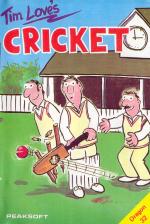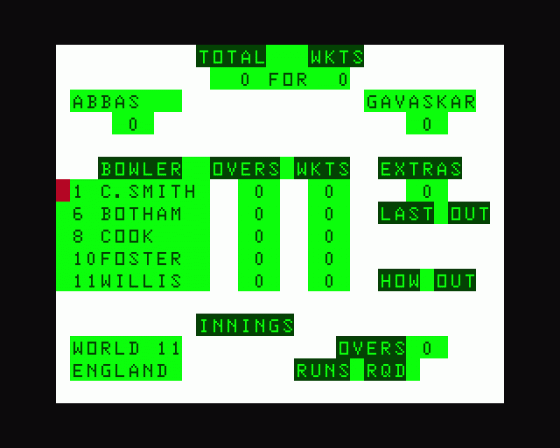
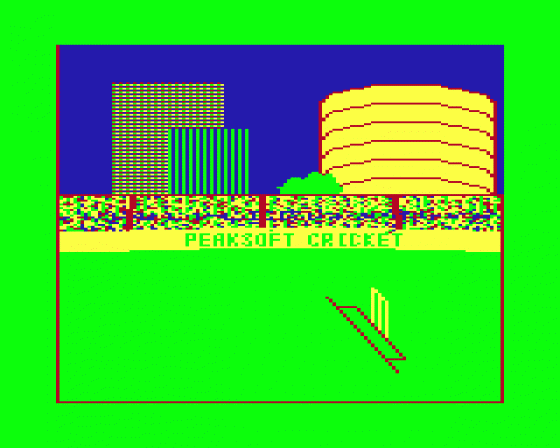
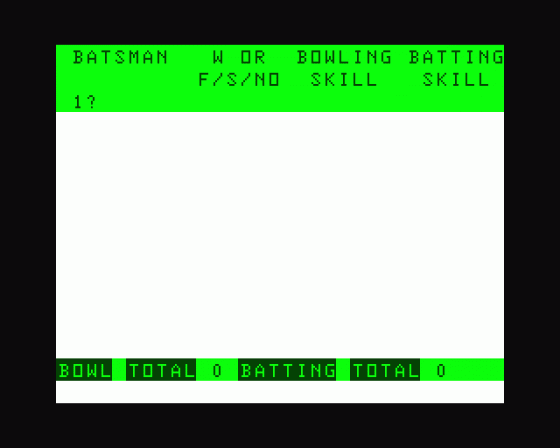
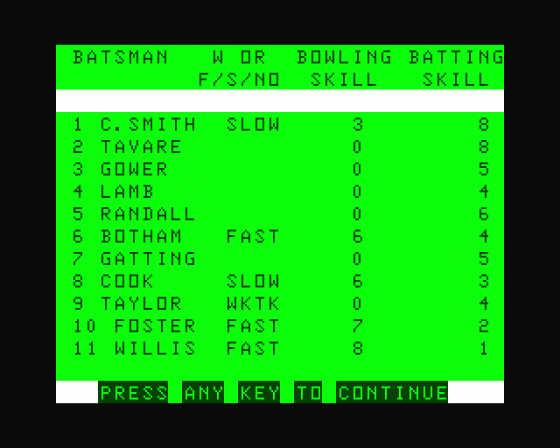
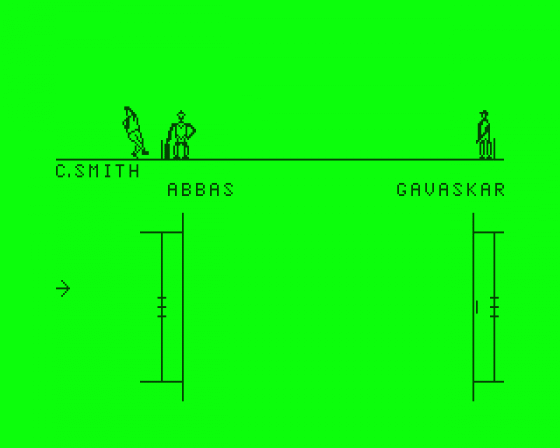
| Genre: | Unknown Genre Type |
| Publisher: | Peaksoft |
| Cover Art Language: | English |
| Machine Compatibility: | Dragon 32, Dragon 64 |
| Release: | Professionally released on Cassette |
| Available For: | Commodore 64/128 & Dragon 32 |
| Compatible Emulators: | XRoar 0.33.1 (PC (Windows)) |
| Original Release Date: | 1st August 1984 |
| Original Release Price: | £9.95 |
| Market Valuation: | £2.50 (How Is This Calculated?) |
| Item Weight: | 64g |
| Box Type: | Cassette Single Plastic Clear |
| Author(s): | Tim Love |
Variant Items
There are 0 other items featuring this same game (that we know about!). Click any of them for their details.
Active Auctions
Closed Auctions
Buy It
Unfortunately no-one is currently selling this item.
However, this item has previously been sold on everygamegoing.com, so there is a good chance it will be offered again. Add it to your Wanted Items to be notified immediately anyone offers it for sale.
Auction Price Watch
Worried you're being ripped off? Closing prices on eBay can help you decide what a reasonable price is for a particular item.

Home Computing Weekly
10th July 1984
An exceptional game which will thrill fanatics and others. Read Review

Personal Computer Games
1st August 1984
A must for cricket lovers. Read Review
Full Instructions
Introduction
Tim Love's Cricket is the most realistic cricket simulation yet produced for any home micro.
It simulates a 40-over match between two teams of any chosen standard, from Village Green to Test Match. Players are provided with joystick control over battling, bowling and fielding, with the batting and bowling action shown in animated graphics - as it actually happens. Alternatively, one player may play against the computer.
There is a valuable bowling practice option, and the save game feature allows the player to build a library of teams, so that a current Test XI may, for example, compete against great teams of the past.
For best results, we recommend the use of potentiometer joysticks (the type normally supplied for use with the Dragon). If necessary, only one joystick can be used for play against the computer, but in this case, you will need to change sockets between each innings.
You can choose Village Green, County or Test Match skill level. The main factor affected is the speed of bowling. If you ask for batting help, the point at which the ball will pitch is marked during the bowler's run-in.
If you choose your own teams, no name may be more than eight letters long. You must pick a wicket keeper and five bowlers. Each team may have up to 50 batting skill points and 30 bowling skill points shared among the players, but no player may have a skill rating of more than 9 points. In the second column, type F (Fast bowler), S (Slow bowler), W (Wicket keeper) or N (None of these).
A damp wicket favours spin bowlers.
After the toss, and deciding whether to play against the computer, the batting side will use the left joystick, and the bowling side will use the right joystick and the keyboard.
You will then be given a chance to practise bowling.
To choose a bowler, use the number keys. Player 10 is '0' and player 11 is ':'. No bowler may bowl more than twelve overs.
Bowling
Virtually any type of ball may be delivered, but a great deal of skill is involved. The action is shown on a split screen, with a side view at the top, and a plan view at the bottom. An arrow on the bottom screen shows where the bowler's position at the crease will be when the ball is released. You have three seconds to position the arrow with the joystick.
When the second tone sounds, you must immediately move the joystick to control the type of delivery. Look down at the joystick shaft from above, and imagine that it represents athe bowler's arm, looking from his hand to his shoulder, at the moment that he releases the ball. The further you move the joystick to the right, the shorter the ball will be pitched. If you move the joystick down, the ball will be delivered to the right; move it up, and the ball will be delivered to the left. For example, holding the joystick in the south-west position will deliver a full toss to the right. You must experiment to master the effects of spin.
Once the bowler begins his run-up, move the joystick to the left to produce a slower ball, or to the right to produce a faster one.
Practice
Bowling practice will prove very valuable. To return to the action from practice, hold down the joystick button at the end of a bowl.
Batting
At first, the joystick controls the height of the bat and how far forward it is. Once you are satisfied, press FIRE, and the joystick will now control the batsman's side-to-side position in the crease, and the angle of the bat. The reaction of the ball when it is struck is very realistic, and depends on the part of the bat which it strikes, the angle, and the ball's spin.
Fielding
To change the position of the fielders, the F key should be held down during the first bowling tone, when the display will switch to a bird's eye view of the pitch. At first, the joystick will control the wicket keeper. If you hold down the fire button, the fielders will 'bleep' in turn. Release the button when the fields you want to move bleeps, then move him with the joystick. To return to the action, press F again. The computer will automatically position the wicket keeper, bowler and any fielders who are too close. When the batsman has hit, or missed the ball, the display switches to bird's eye view, unless the batsman has been bowled, or is LBW, or has hit his wicket. The fielders are once again controlled by the joystick and fire button. The gauge at the bottom right shows the ball's height in metres, to help you to judge where to position a fielder for a possible catch, or simply to stop the ball. The fielder will return the ball to the wicket automatically.
Running
Immediately, the display changes to bird's eye view, the batting joystick controls running. Moving the joystick to the left will start the batsmen running. To avoid the chance of being stumped by the wicket keeper while deciding whether to run, keep the joystick to the right.
When the action is over, the scoreboard will be shown, and at the end of each innings, bowling averages will appear. At the end of the match, pressing a key will start a new game after a short delay.
Towards the end of an innings, you may find that owing to mismanagement of the choice of bowlers, no-one can bowl (remember that each bowler is restricted to twelve overs). In this situation, the innings will end.
Hints: For the batter - Concentrate on the top half of the screen first. 'Hit wicket' and 'run out' through stumping can usually be avoided.
For the bowler - use the wicket keeper and, if necessary, a slip, to stop byes.
For both - practice makes perfect!
Loading
CLOADM (ENTER)
The program loads in three parts.
To continue a saved game, follow the instructions on the screen.
Miscellaneous
This game was mentioned in the following articles:
Screen Designers
The following utilities are also available to allow you to edit the supplied screens of this game:
Cheats
Download
A digital version of this item can be downloaded right here at Everygamegoing (All our downloads are in .zip format).
| Download | What It Contains |
|---|---|
| A digital version of Tim Love's Cricket suitable for XRoar 0.33.1 (PC (Windows)) |
Report A Problem
We thank you from the bottom of our hearts if you report something wrong on our site. It's the only way we can fix any problems!
You are not currently logged in so your report will be anonymous.
The 2 most recent sales for this item are as follows:
| Date Sold | Price Sold For | As Part Of Bundle | By User |
|---|---|---|---|
| 1st July 2016 | £1.99 | No | dave_e |
| 15th August 2016 | £1.99 | No | dave_e |
Add Note
Release Country
Change the country to update it. Click outside of this pop-up to cancel.
Scan Of Selected Article
If you auction an item, it will no longer show in the regular shop section of the site.

